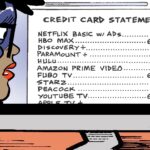 “Data-Driven Thinking” is a column written by members of the media community and containing fresh ideas on the digital revolution in media.
“Data-Driven Thinking” is a column written by members of the media community and containing fresh ideas on the digital revolution in media.
Mario Diez is CEO of quadrantONE, a joint venture of Tribune Company, Gannett, Hearst and The New York Times Company, which offers exclusive ad inventory on news and information sites across U.S. local markets.
Digital advertising has been exploding with innovation and new technology in the past few years. RTB, contextual targeting, page-based analysis, real-time ad verification and brand protection have all burst onto the scene, and I’m sure each of us can name at least one company that was funded and founded to do just one of those functions. But what many don’t acknowledge is that each of these services is essentially a product or a feature. That is to say, some do not merit entire companies to support them.
The problem is not that these ventures are emerging. They all represent necessary advancements for online advertising’s growth and expansion. The problem is in two specific areas. First is that the current operational infrastructure and technology platforms are very much a closed system. Many of the ad tech companies are heavily dependent on integration into the buying community’s core infrastructure of ad serving or ad measurement. Second, the majority of these companies need revenue immediately and in digital media, the majority of that revenue can be sourced only through traditional media sales. This has lead to a massive amount of sell side pressure on a buy side that is already challenged with fragmentation and doing more with less.
The term “black box” is thrown around far too often within this industry, because too many of the systems buyers and publishers rely on are closed off to others. Were they open, they could drastically speed the pace of innovation – and possibly speed the appeal for advertisers and the use of these new ad technologies.
People talk too much about how the financial services model can be applied to our industry. But, there are too many corollaries to ignore. Think about how mutual funds and other investment products all fight for shelf space at a given brokerage firm. That’s the same way it is at the agency level for Digitas, Havas, MEC, and all the other agencies whose attention is the first criteria of success for technology providers.
The difference is that in the financial world, the broker can execute those products in a plug and play approach, picking which one works best for each client that walks into their office. In our world, you have to sign a new contract to try another product. Even more challenging is the fact that so many of these features, when they exist as separate companies, refuse to work together, insisting that they do the same thing while at the same time fighting tooth and nail to differentiate themselves. So we’re left with a competitive set when we should truthfully be looking at a complementary one. There’s simply not enough budget available for a buyer to utilize all the features needed for a top-grade campaign.
To be clear –This is not to say any of these tools are completely unnecessary or superfluous. Who doesn’t want to verify that their ads appear, or learn as much about the page as possible before an impression is served? Those are necessary tools for translating digital ad buying to traditional-minded advertisers.
In the print days, buyers didn’t simply send creative to “generic women’s magazine” because they were told women 18 to 34 read it. They bought Vogue, Vanity Fair and Time, and knew as much as they could about the content and readership. Digital complicates the matter, and while advertisers want these tools, they all come at an extra cost, with separate billing invoices and sales teams to work with. Speak to any leading publisher today and the most common business challenge they’d discuss is how it’s all too much and needs to be easier.
The real winners in the digital ad ecosystem will be the ones offering open infrastructures and API hooks so that any system, product, solution can plug in directly. AppNexus made a huge leap late last year when it launched its app marketplace that lets ad buyers pick the tools they want to use. Suddenly, the name AppNexus actually makes sense. Buyers can experiment with various tools to find the right formula for them, without signing long-term contracts or dealing with long integration periods. MediaMath has also built an impressive apps marketplace, with more than 100 made available to any buyers through their TerminalOne platform.
Should open platforms continue to evolve, we could also see the ease from a buyer side. No longer do they need to evaluate features of our industry as an entire media solution that displaces others. Buyers could plug the technology directly on existing premium media relationships to enhance them. VC and PE investment would fund true technology products and investment efficiency and multiples would be much more favorable as the need to build a national media sales team in the traditional sense would not be needed.
As consolidation continues, there will be greater debate about what constitutes a “product” and what makes a “company.” The sooner we move to an open landscape, where entrepreneurs can develop products that plug into a variety of ad solutions and are widely available, the less that debate will matter. We would also see the industry garner more and larger buys than it does now and simply reduce the challenge of noise that buying entities are overwhelmed with evaluating for their clients. That’s a lot more appealing than the opposite, which is a slow-down on investment and, as such, slower innovation.
Follow Mario Diez (@mariojdiez), quadrantONE (@q1tweets) and AdExchanger.com (@adexchanger) on Twitter.













